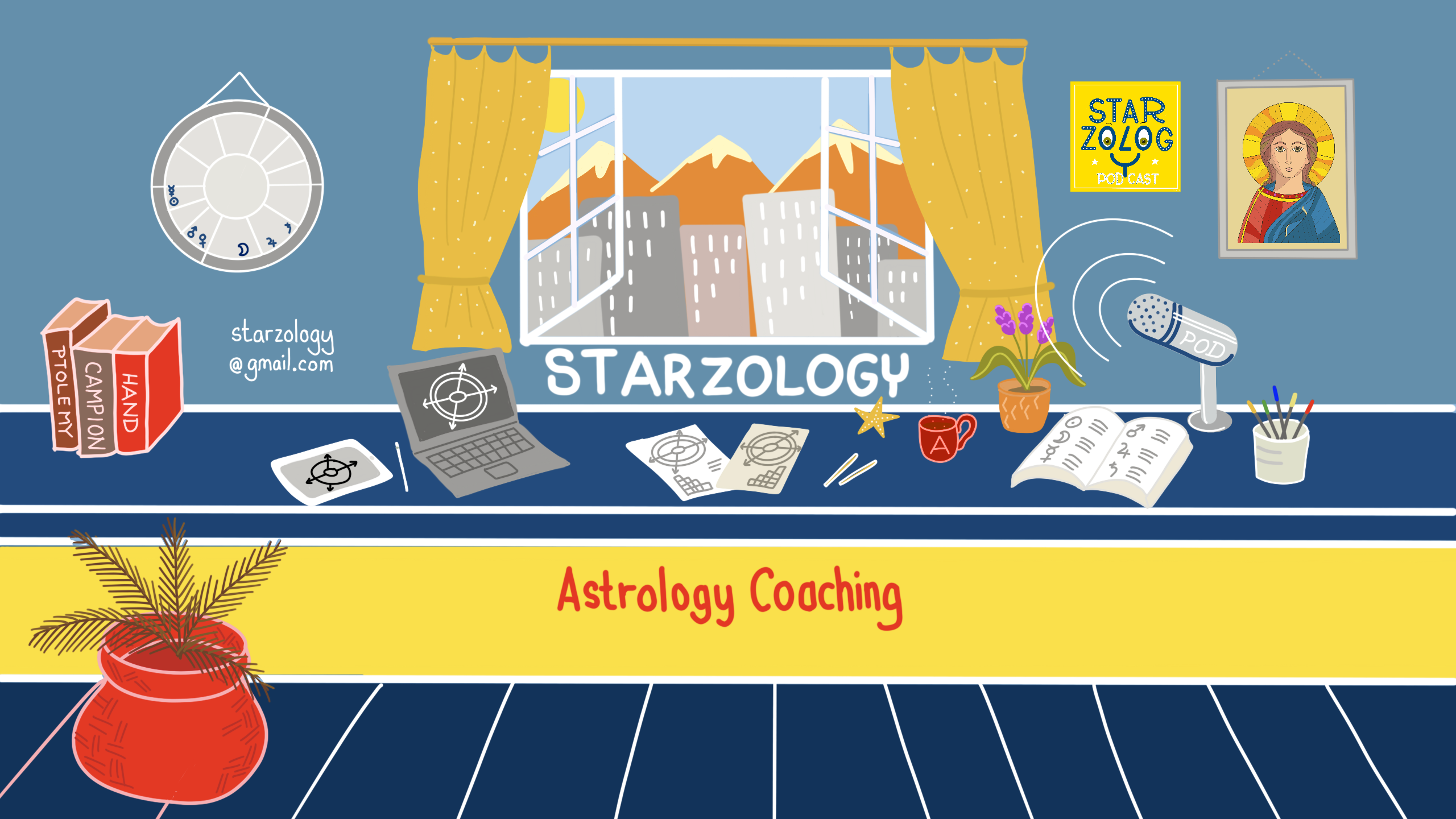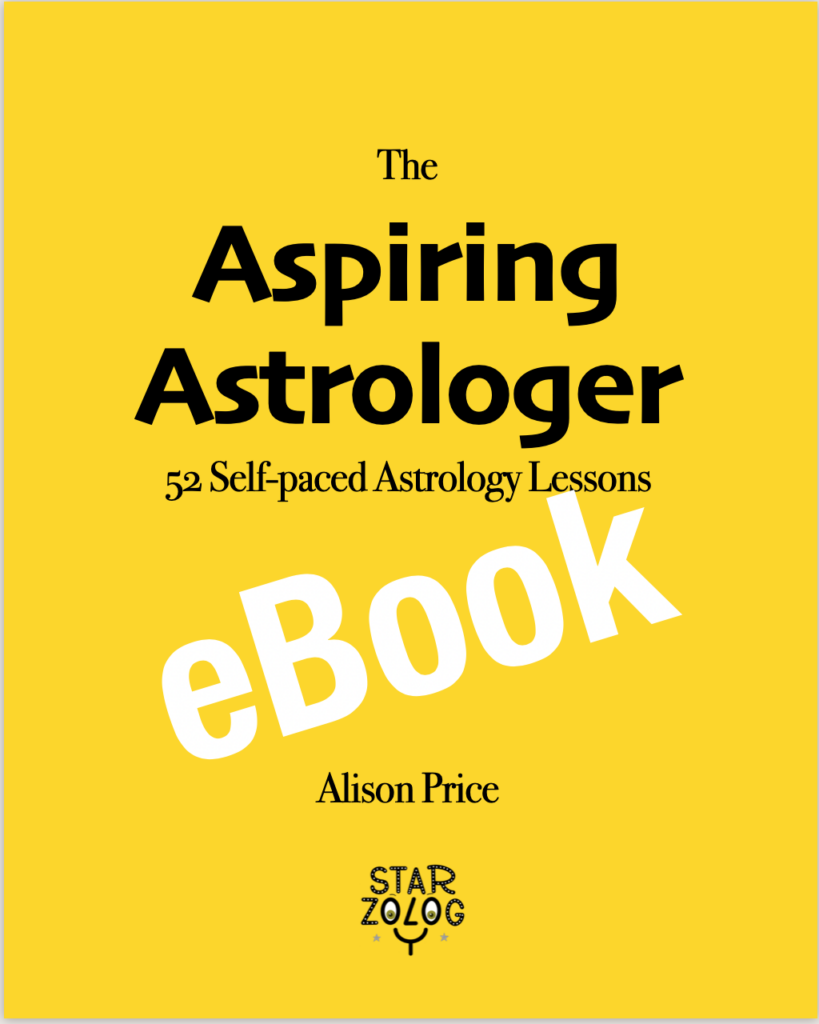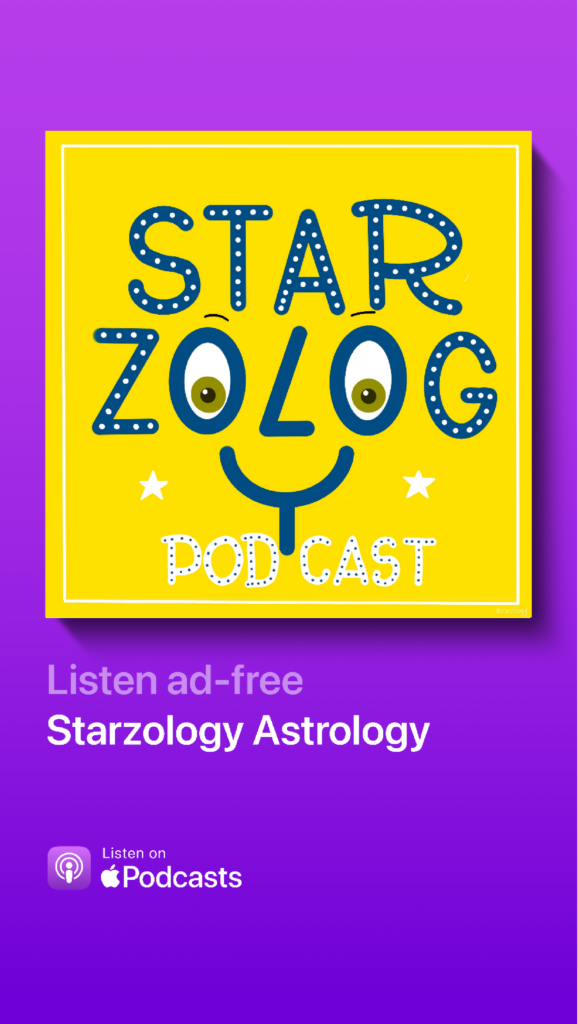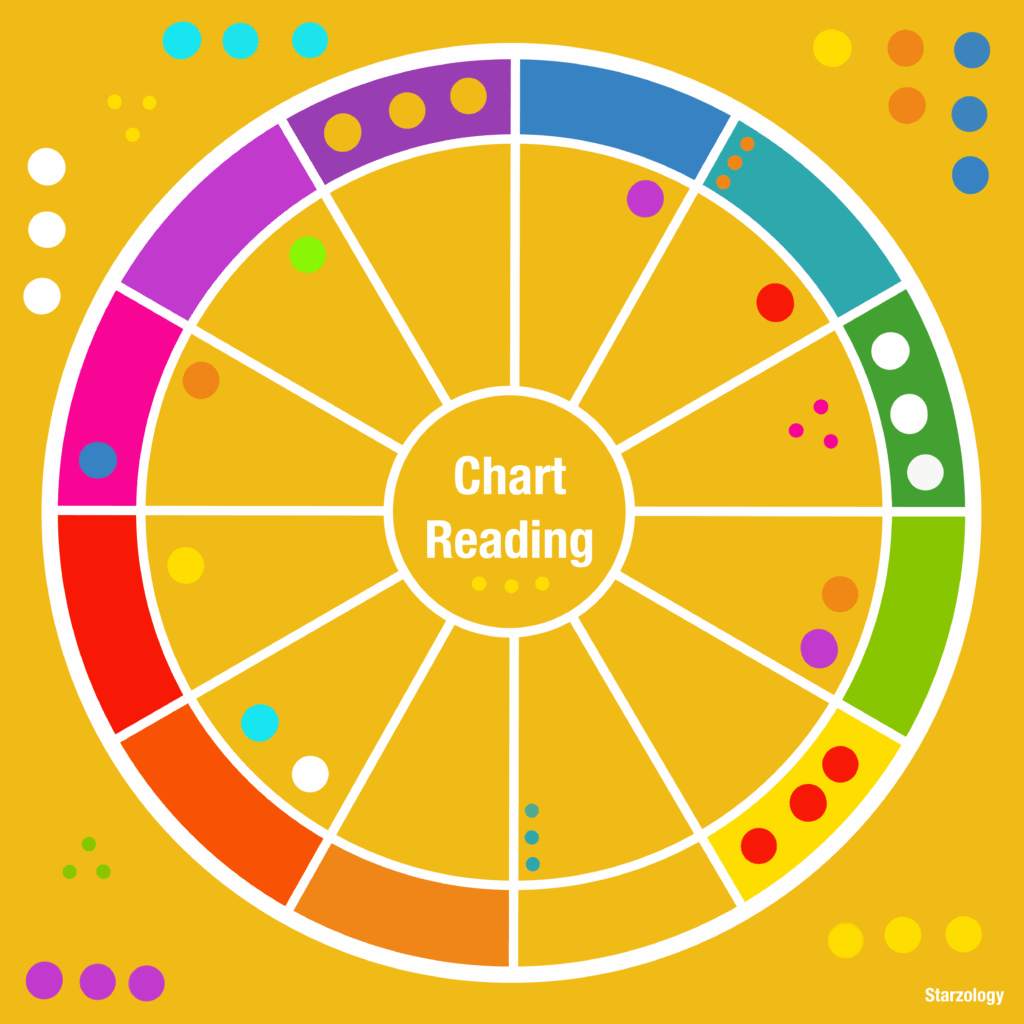The Starzology monthly horoscope overview provides all the ingresses, stations and lunations for each month with a short interpretation.

Octile Aspects
Author: Alison Price – Published: October 2024
Halloween and Octile Aspects
I’d like to give some thought to where these octile festivals and celebrations come from. And particularly how the position of the Sun in the Zodiac marks the timing of these pagan events. In the Wheel of the Year, the pagan festivals are not just randomly picked from the calendar, rather they are determined by the position which the Sun reaches in the zodiac every year. These days mark the passing of time. We can divide the year into the four seasons of spring, summer, autumn and winter. We can further divide each season in half through the cross-quarter days and this is what I’d like to share a little bit more about with you now.

8th Harmonic (Octiles)
In astrology, the 8th harmonic is created by dividing the 360° zodiac circle into eight equal parts. This results in aspects that reflect the energetic dynamics of this division. The key aspects associated with the 8th harmonic are the semi-square (45°) and sesquiquadrate (135°). These are considered minor aspects, yet they carry a potent, tension-driven energy. They often indicate underlying friction that pushes for action, growth and resolution, making them catalysts for change and transformation in a subtle but persistent way.
Tension and Friction
Semi-squares and sesquiquadrates create a subtler yet untiring pressure, unlike the more intense energy of squares or oppositions. This friction motivates you to take action, encouraging you to address imbalances or areas in your life that need improvement.
Subconscious Challenges
The challenges brought by 8th harmonic aspects often stem from within, highlighting inner psychological conflicts or unresolved emotions. These aspects push for personal transformation, making them powerful forces for long-term growth.
Catalyst for Change
These aspects act as subtle triggers that can shift your perspective, behavior or attitude. Though they may create discomfort, this tension is necessary to stimulate movement and progress in stagnant areas of life.

Octile Aspects
Semi-squares (45°)
In astrology, the semi-square aspect occurs when two planets or points in a chart are separated by an angle of 45°. Although considered a minor aspect, the semi-square carries significant energetic tension and friction, though it is less intense than the square (90°). Often associated with the color orange in astrological charts, this aspect represents subtle challenges that, while not immediately obvious, push us toward necessary growth and change.
The semi-square signals areas where we may feel stuck or uncomfortable. Unlike the more pressing energy of a square, the semi-square’s tension feels like something bubbling just below the surface, urging us to take action, but not in an overwhelmingly urgent way. It often points to lingering frustrations or unresolved issues that need attention in order to make progress, but we may need to dig deeper to recognize them.

Sesquiquadrates
The sesquiquadrate is an aspect formed by a 135° angle between two planets, representing a more pronounced internal conflict than the semi-square, though still a minor aspect. This aspect often highlights areas where we experience frustration or tension due to misalignment or imbalance in our approach to certain life situations. Unlike the semi-square, the sesquiquadrate can feel more complex, as it involves energies that don’t flow smoothly together, requiring more effort to resolve.
While semi-squares and sesquiquadrates may seem less influential than the major aspects, they often act as subtle forces persistently driving personal development. They challenge us to work through discomfort and friction, encouraging growth in ways that may not be immediately obvious but are essential for long-term progress. These aspects push for internal transformation that can lead to breakthroughs when approached with awareness and a willingness to confront hidden issues.

Cross Quarter Days
Sun’s Position
The cross-quarter days are significant because they correspond to the Sun reaching 15° of the four fixed signs: Taurus, Leo, Scorpio and Aquarius. These days represent a midpoint between the equinoxes and solstices, marking important seasonal centers. Each cross-quarter day reflects a moment of energetic balance and shift, offering a time for reflection, celebration and intention-setting.
15° Taurus: Beltane (May 1)
Taurus, an Earth sign, represents stability, fertility and growth. When the Sun reaches 15° of Taurus, it marks Beltane, the height of spring in the Northern Hemisphere. This is a time of blossoming, fertility and abundance. In many ancient cultures, Beltane isa celebration of life, growth and the turning of the season toward summer. Energetically, it’s a time to celebrate physical vitality and the fertility of the earth and soul.
15° Leo: Lughnasadh – Lammas (August 1)
Leo, a Fire sign, is associated with creativity, self-expression and vitality. When the Sun is at 15° Leo, it corresponds to Lughnasadh, the first harvest festival. This is a time for giving thanks for the abundance of the earth, acknowledging the fruits of labor and preparing for the coming autumn. Energetically, this cross-quarter day is about honoring personal achievements and creativity while recognizing the need for balance as the summer begins to wane.
15° Scorpio: Samhain (November 1)
Scorpio, a Water sign, governs transformation, death and rebirth. When the Sun reaches 15° Scorpio, it aligns with Samhain, a powerful time marking the end of the harvest and the beginning of winter. Samhain is also seen as a moment when the veil between worlds is thin, making it a time to honor ancestors and reflect on the cycles of life and death. Energetically, this cross-quarter day invites deep introspection, letting go of what no longer serves and embracing transformation.
15° Aquarius: Imbolc (February 1)
Aquarius, an Air sign, symbolizes innovation, vision and new beginnings. When the Sun is at 15° Aquarius, it corresponds to Imbolc, the first stirrings of spring. This is a time of renewal, purification and the return of light after the dark winter. Energetically, Imbolc represents the planting of new seeds, both literally and metaphorically, as we prepare for the growth of spring. It is a time to set intentions for the year ahead.

15° of Fixed Signs
Symbolism
Fixed signs embody stability, endurance and determination. When the Sun reaches 15° of these signs, it is at a key point in the season, where the energy is concentrated and ripe for harnessing. The cross-quarter days offer a moment of heightened awareness and connection to the natural cycles of the earth. These days represent a balance between the dynamic forces of the changing seasons and the steady, grounding energy of the fixed signs. Cross quarter days are at the heart of each of the four seasons. By aligning with the cross-quarter days, we can tune into these potent energetic shifts, using them as guideposts for personal growth, reflection and transformation throughout the year.
Sacred Geometry
In numerology and sacred geometry, dividing by 8 relates to the octagon shape and symbolizes balance, transition and structure. Eight-fold divisions in astrology create a cyclical pattern that allows for a deeper understanding of the energy dynamics within a chart. When planets are connected by these aspects, they often signal the need to break through internal barriers or patterns to create a shift in awareness or behavior. The energy of these aspects is often felt as a growing restlessness or discomfort, nudging us toward resolution, personal evolution, or adjustment. Working with semi-square energy requires patience and persistence, as the changes it brings are usually not immediate but unfold over time.
Closing
I personally don’t have any semi-squares or sesquiquadrates in my birth chart. However, when the transiting Sun reaches 15° of the fixed signs, it makes several strong hard connections to my natal chart. This means that every cross-quarter day, which is four times every year, I get a meaningful transit from the Sun. And let’s face it, normally you wouldn’t really pay much attention to the transiting Sun, but because it triggers my chart on some days, I find it fascinating. I suspect this is why I have a distinct interest in the solar cycle and the Sun’s movement throughout the year.
Extend Yourself
Your Natal chart
Let’s explore your natal chart a little bit more regarding any octile aspects.
- List any semi-squares in your chart.
- List any sesquiquadrates in your chart.
- Note the two planets in each aspect.
- Decide if it is an applying or a separating aspect.
- Find the exact orbs for each aspect.
- Sort the aspects in a list from tightest orb to widest orb.
Extend Yourself Further
Interpretation
Now let’s go a little deeper with the interpretation of some of your octile aspects. With your list of octile aspects in hand, please do the following:
- Choose the tightest octile aspect and interpret it. Pay attention to both planets involved. Note if they are retrograde or direct. Note if the aspect is applying or separating. Note if the aspect is in the same polarity. Write a full interpretation for your tightest octile aspect (500 words).
- Continue on working your way through your list and interpret every aspect in your natal chart.
Starzlife
Premium Astrology Newsletter
This piece originally appeared in our Starzlife premium astrology newsletter. As with every issue, subscribers received a complimentary PDF download related to this topic.
For those interested in receiving such in-depth articles directly upon release, we encourage you to join our Starzlife premium astrology newsletter.
Your subscription to Starzlife not only grants you access to exclusive content but also helps sustain our creative endeavors and operational costs.
⠀
Find out more about Starzlife here.
⠀
Author Bio
Alison Price: Professional Astrologer
Alison helps you uncover your individual creativity and lead a fulfilling life using your own astrology. She shares her wisdom from the heart with a touch of humor. She offers Consultations for everyone and Coaching for Aspiring Astrologers.
If you’d like to get in touch with Alison, you can reach out to her via email at starzology@gmail.com.
More Articles
If you enjoyed this post, you may like some more astrology related articles from our blog.

This Month’s Horoscope Overview

Pluto Aspects
In astrology, PLUTO and his aspects can indicate where serious transformations will occur in your life.Make sure to explore this planet.

This Month’s Horoscope Overview
The Starzology monthly horoscope overview provides all the ingresses, stations and lunations for each month with a short interpretation.

Artists Charts: Venus and Neptune
Author: Alison Price - Updated: March 2025 Artists Charts I'm not just an astrologer, but I consider myself as a hobby artist and crafter as well. Being creative and expressing yourself (and myself) through art is a great interest of mine. Art in a Chart When I...

Starzlife Free Newsletter
Welcome to “The Starzologer” ideas, insights and inspiration for creative, artistic
astrologers to keep the astro conversation going.














 Moon Phase Keywords[/caption]
Moon Phase Keywords[/caption]
















